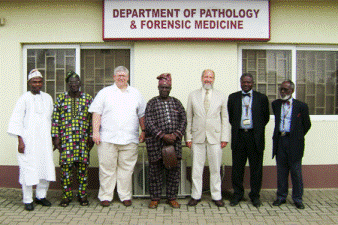Natural Resources, School of

Karl Reinhard Publications
Document Type
Article
Date of this Version
2011
Citation
J. Parasitol., 97(5), 2011, pp. 000–000
Abstract
Previously, we reported a tick recovered from Antelope Cave in extreme northwest Arizona. Further analyses of coprolites from Antelope Cave revealed additional parasitological data from coprolites of both human and canid origin. A second tick was found. This site is the only archaeological locality where ticks have been recovered. We also discovered an acanthocephalan in association with Enterobius vermicularis eggs in the same coprolite. This association shows that the coprolite was deposited by a human. This discovery expands our knowledge of the range of prehistoric acanthocephalan infection. In addition, findings from canid coprolites of Trichuris vulpis are reported. This is the first published discovery of T. vulpis from a North American archaeological context. The close association of dogs with humans at Ancestral Puebloan (Anasazi) sites raises the potential that zoonotic parasites were transferred to the human population. The archaeological occupation is associated with the Ancestral Pueblo culture 1,100 yr ago.


Comments
Copyright American Society of Parasitologists 2011. Used by permission.